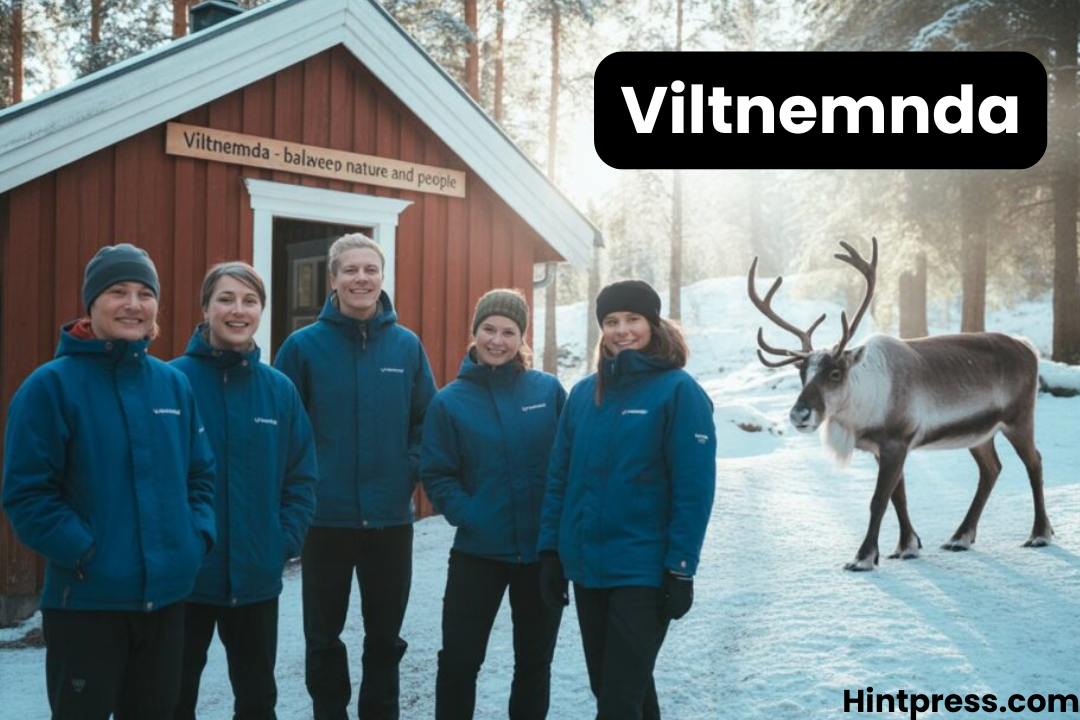Viltnemnda: Understanding Its Role and Importance in Wildlife Management

Viltnemnda is an essential part of wildlife management systems in many regions, especially in Scandinavian countries like Norway. The term viltnemnda often refers to a local wildlife committee or council responsible for overseeing the protection, regulation, and sustainable use of wildlife resources. As human and animal interactions increase, the work of this becomes even more critical in maintaining natural balance and preventing conflicts.
This article explores the meaning, purpose, and significance of viltnemnda in detail. It also explains how it functions, its responsibilities, and the challenges it faces. By the end, you’ll understand why viltnemnda plays such a vital role in environmental sustainability and local community engagement.
The Meaning and Origin of Viltnemnda
Viltnemnda originates from the Norwegian words vilt (meaning wildlife) and nemnd (meaning committee). Together, they describe a local group or authority responsible for wildlife-related issues. The viltnemnda works under municipal or regional governments to manage hunting, animal conservation, and wildlife-related conflicts.
Historically, viltnemnda emerged to ensure fair hunting practices and to balance human activities with nature. As wildlife policies evolved, the viltnemnda became a trusted link between authorities and local communities. Its purpose remains simple yet powerful — to protect wildlife while allowing sustainable human use of natural resources.
The Main Purpose of Viltnemnda
The viltnemnda’s primary purpose is to create harmony between humans and wildlife. It ensures that animal populations remain healthy and that ecosystems stay balanced. This includes managing hunting quotas, addressing road accidents involving animals, and handling problem wildlife near populated areas.
In many regions, viltnemnda also helps enforce national wildlife laws. By doing so, it supports long-term biodiversity and prevents the overuse of resources. Every decision made by the viltnemnda aims to promote both conservation and coexistence.
How Citizens Can Interact With Viltnemnda
Citizens can interact with viltnemnda in several meaningful ways. They can report wildlife sightings, road accidents involving animals, or damaged habitats directly to the committee. People can also attend local meetings to share opinions or learn about wildlife policies. Additionally, hunters and landowners can apply for permits and participate in conservation projects organized by viltnemnda. Schools and community groups may invite members for educational talks about nature and sustainability. By staying involved, citizens help viltnemnda make informed decisions. This open communication strengthens cooperation, increases awareness, and supports responsible wildlife management for future generations.
Responsibilities of Viltnemnda
The viltnemnda carries out several important tasks that directly affect local environments. Some of its main responsibilities include:
- Wildlife Management: Setting and monitoring hunting seasons and quotas.
- Conflict Resolution: Handling issues between people and wild animals.
- Accident Response: Managing animal-related traffic accidents.
- Data Collection: Recording information on wildlife populations and migrations.
- Community Awareness: Educating the public about sustainable wildlife practices.
Through these responsibilities, the viltnemnda ensures that wildlife policies are followed and respected by everyone.
How Viltnemnda Works in Practice
Viltnemnda operates at the local level, but its structure often depends on national regulations. Typically, the committee includes members chosen by the municipal council. These members may have backgrounds in hunting, farming, or environmental science.
When wildlife incidents occur, the viltnemnda steps in to assess the situation. For example, if a moose appears near residential areas, the viltnemnda decides whether to relocate or monitor it. Similarly, in case of an animal accident, the committee coordinates cleanup, reporting, and safety measures.
This close connection to local communities makes viltnemnda both effective and trusted. It ensures that actions are fast, fair, and suited to local conditions.
The Role of Viltnemnda in Wildlife Conservation
Wildlife conservation is one of the viltnemnda’s most vital roles. It not only manages animal numbers but also protects endangered species. By monitoring hunting and regulating habitats, viltnemnda ensures that future generations can enjoy thriving wildlife.
Additionally, the viltnemnda supports research on local species and helps in tracking population changes. It works alongside scientists, hunters, and conservationists to maintain a balanced ecosystem. This cooperation between various groups strengthens wildlife protection efforts.
How Viltnemnda Supports Local Communities
Viltnemnda doesn’t only focus on animals; it also serves local people. Many communities rely on hunting and outdoor activities for food, income, and tradition. The viltnemnda provides fair and safe systems for hunting licenses and helps educate hunters about ethical practices.
Moreover, when wildlife causes property damage or safety concerns, the viltnemnda acts as a bridge between citizens and authorities. It helps resolve issues peacefully and efficiently. Through its community role, the viltnemnda promotes respect for both nature and human needs.
Benefits of Having a Viltnemnda
Having a local viltnemnda provides multiple benefits for society and the environment. Some of these include:
- Faster Response: Quick action in wildlife emergencies.
- Better Data: Accurate monitoring of animal populations.
- Improved Safety: Reduces wildlife accidents and property damage.
- Stronger Cooperation: Builds trust between authorities and residents.
- Sustainable Hunting: Ensures ethical and controlled hunting practices.
Because of these benefits, the viltnemnda remains a key institution in sustainable natural resource management.
ChatGPT said:
Comparison With Other Countries
When comparing viltnemnda with wildlife management systems in other countries, clear differences and similarities appear. In Norway, viltnemnda operates locally, focusing on community-based wildlife decisions. In contrast, many countries like Canada or the United States have centralized wildlife agencies managing regulations nationwide. Scandinavian nations often emphasize local responsibility, allowing people closer to nature to make key decisions. Meanwhile, in some regions, non-governmental organizations or private conservation groups play a bigger role. Despite these variations, the core goal remains the same everywhere — to balance human needs with wildlife protection. Viltnemnda’s localized approach makes it especially effective and community-driven.
Challenges Faced by Viltnemnda
Even though viltnemnda plays an important role, it faces several modern challenges. Some key ones include:
- Climate Change: Changing weather affects wildlife migration and habitats.
- Urban Expansion: More people means more wildlife conflicts.
- Limited Resources: Some viltnemnda teams lack funding or manpower.
- Public Awareness: Not everyone understands its role or purpose.
- Technological Barriers: Digital data collection and analysis can be difficult for smaller committees.
Despite these challenges, viltnemnda continues to adapt and find new ways to protect both nature and people.
A Personal Story: Meeting the Viltnemnda
Last autumn, I had my first real encounter with the viltnemnda after a deer appeared near my neighborhood. Concerned for its safety, I contacted the local office, not knowing what to expect. Within an hour, two members of the viltnemnda arrived, calm and professional. They carefully observed the animal, explained their process, and reassured everyone nearby. Watching them work showed me how much care and knowledge goes into wildlife management. Their respectful approach toward both animals and people impressed me deeply. That experience taught me the true value of viltnemnda — protecting wildlife while keeping communities safe and informed.
How Viltnemnda Collaborates with Other Organizations
Viltnemnda often works closely with other institutions, including police, environmental agencies, and research centers. This collaboration helps improve wildlife management efficiency.
For instance, when a rare animal species appears, viltnemnda may contact national experts for guidance. Similarly, in the case of road accidents involving animals, the police and viltnemnda coordinate efforts to ensure safety.
This teamwork model ensures that all wildlife issues are handled with professionalism and compassion.
Technology and the Future of Viltnemnda
Modern technology is transforming how viltnemnda operates. Digital tools, drones, and tracking systems make wildlife monitoring more accurate. With satellite maps, viltnemnda can predict animal movements and prevent accidents more effectively.
In the future, viltnemnda may use artificial intelligence to analyze patterns and detect illegal hunting. These innovations will help the committee respond faster and make better decisions. Technology ensures that viltnemnda stays efficient, transparent, and future-ready.
Viltnemnda and Environmental Awareness
Environmental education is another key focus for viltnemnda. Through campaigns and workshops, it encourages citizens to understand wildlife behavior and conservation. Schools often partner with viltnemnda to teach students about nature’s importance.
By raising awareness, viltnemnda helps people make eco-friendly choices and respect wildlife habitats. This educational role is crucial for building a responsible and sustainable future.
The Economic Impact of Viltnemnda
Viltnemnda contributes to the economy in several ways. It supports local hunting industries, ecotourism, and outdoor recreation. By maintaining wildlife populations, viltnemnda ensures stable hunting quotas that generate income for rural areas.
Furthermore, reducing animal-related accidents saves money on infrastructure and emergency services. Through these efforts, viltnemnda shows how protecting nature can also support economic growth.
Why Viltnemnda Matters Today
In today’s fast-changing world, the work of viltnemnda is more relevant than ever. Urban growth, climate change, and human activities threaten wildlife daily. Viltnemnda acts as a guardian, ensuring that development happens responsibly.
Its commitment to cooperation, education, and sustainability makes it a model for other regions. By protecting animals and their habitats, viltnemnda also protects the health and future of the planet.






